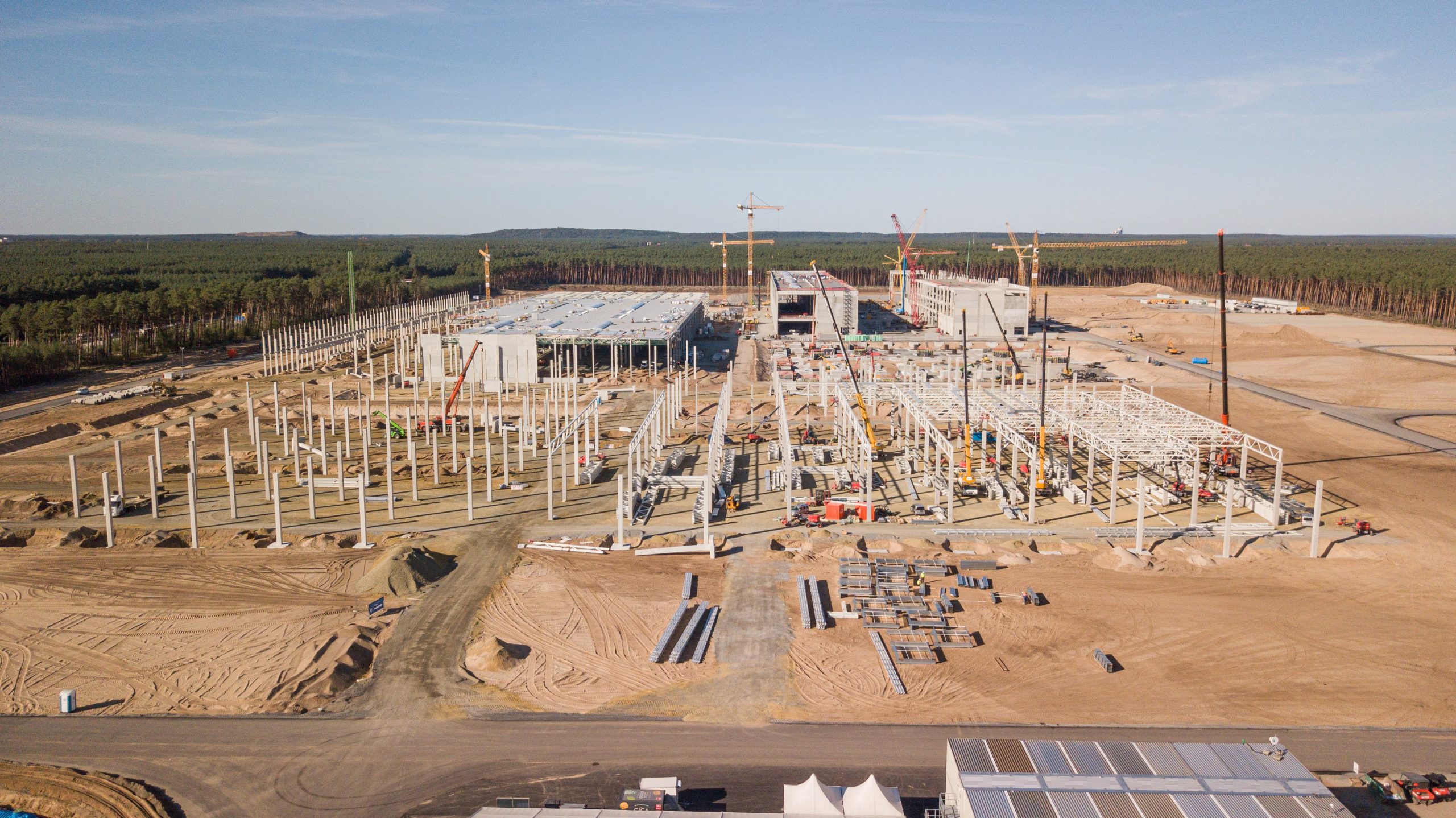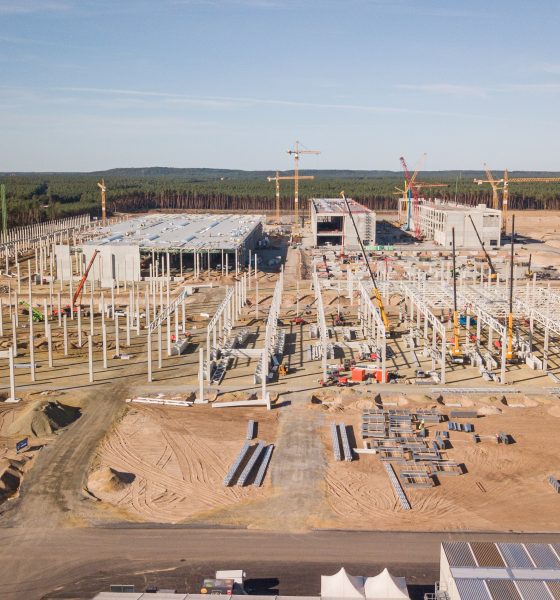

News
Tesla Gigafactory Berlin’s opposition hearings are off to a rocky start
The hearings for Gigafactory Berlin’s opposition have begun, and things are off to a rather rocky start. About an hour after the meeting began on Wednesday, the proceedings were interrupted due to a petition alleging that officials have a pervading pro-Tesla bias.
Earlier this month, Ulrich Stock, the head of the technical environmental protection department in the State Environment Agency, noted that he does not see any fundamental obstacles to Giga Berlin’s final approval. “As things stand, we cannot identify any fundamental obstacles to approval, not even based on the objections submitted,” he remarked. Stock currently leads the meetings on Giga Berlin’s opposition.
According to Uwe Hiksch, the deputy head of the Friends of Nature Berlin, Stock’s previous comments suggests that the official was already set on a decision about Tesla’s factory. In his petition on Wednesday, Hiksch called for Stock to be replaced. Jurist André Zschiegner from the State Environment Agency countered this allegation, however, stating that there was no bias on the meeting leader’s part. “Dr. Stock’s statement must always be seen in the overall context of the proceedings,” he said.
The overall mood of the hearing was heated. In a statement to public broadcaster rbb24, Stock remarked that issues emerged about the meeting’s recording. Tesla had reportedly hired an entity to take the minutes of the hearing, and this aggravated the company’s critics. A lawyer present at the event who thought that the setup was questionable even proceeded to threaten to interrupt the hearing. There were loud boos from critics and loud applause from supporters of the project as well, which was quite rare in Brandenburg.
Stock, for his part, responded with calm to the turbulence. In a statement following the turbulent hearing, he noted that “if it helps decision-making, then that’s the way it should be.”
Later during the day, the discussions shifted to the provisional building permits that Tesla has acquired. The electric car maker has secured provisional permits for sections of Giga Berlin, and the company has proceeded to start the construction of parts of its electric car factory. This upset the project’s opposition, with critics asking for guarantees that the structures would indeed be dismantled if no final permits are secured.
Representatives from Tesla and the State Environment Agency assured critics that agreements are in place for such a scenario.
There are a total of 406 objections that have been raised about Gigafactory Berlin, with the most controversial ones being related to Tesla’s water use, tree-clearing activities, and use of piles in its construction process. Tesla has responded to some of these criticisms by reducing its planned water consumption and using fewer piles on its buildout site. Opposition is also abounding about the fact that Tesla had carried on with Giga Berlin’s construction even before final permits were secured.
The Gigafactory Berlin opposition hearings are expected to continue for several days, with the State Environment Agency booking the hearing’s location until Friday. That being said, officials have stated that the meetings could be extended until next week if needed.

News
Tesla FSD fleet is nearing 7 billion total miles, including 2.5 billion city miles
As can be seen on Tesla’s official FSD webpage, vehicles equipped with the system have now navigated over 6.99 billion miles.

Tesla’s Full Self-Driving (Supervised) fleet is closing in on almost 7 billion total miles driven, as per data posted by the company on its official FSD webpage.
These figures hint at the massive scale of data fueling Tesla’s rapid FSD improvements, which have been quite notable as of late.
FSD mileage milestones
As can be seen on Tesla’s official FSD webpage, vehicles equipped with the system have now navigated over 6.99 billion miles. Tesla owner and avid FSD tester Whole Mars Catalog also shared a screenshot indicating that from the nearly 7 billion miles traveled by the FSD fleet, more than 2.5 billion miles were driven inside cities.
City miles are particularly valuable for complex urban scenarios like unprotected turns, pedestrian interactions, and traffic lights. This is also the difference-maker for FSD, as only complex solutions, such as Waymo’s self-driving taxis, operate similarly on inner-city streets. And even then, incidents such as the San Francisco blackouts have proven challenging for sensor-rich vehicles like Waymos.
Tesla’s data edge
Tesla has a number of advantages in the autonomous vehicle sector, one of which is the size of its fleet and the number of vehicles training FSD on real-world roads. Tesla’s nearly 7 billion FSD miles then allow the company to roll out updates that make its vehicles behave like they are being driven by experienced drivers, even if they are operating on their own.
So notable are Tesla’s improvements to FSD that NVIDIA Director of Robotics Jim Fan, after experiencing FSD v14, noted that the system is the first AI that passes what he described as a “Physical Turing Test.”
“Despite knowing exactly how robot learning works, I still find it magical watching the steering wheel turn by itself. First it feels surreal, next it becomes routine. Then, like the smartphone, taking it away actively hurts. This is how humanity gets rewired and glued to god-like technologies,” Fan wrote in a post on X.
News
Tesla starts showing how FSD will change lives in Europe
Local officials tested the system on narrow country roads and were impressed by FSD’s smooth, human-like driving, with some calling the service a game-changer for everyday life in areas that are far from urban centers.

Tesla has launched Europe’s first public shuttle service using Full Self-Driving (Supervised) in the rural Eifelkreis Bitburg-Prüm region of Germany, demonstrating how the technology can restore independence and mobility for people who struggle with limited transport options.
Local officials tested the system on narrow country roads and were impressed by FSD’s smooth, human-like driving, with some calling the service a game-changer for everyday life in areas that are far from urban centers.
Officials see real impact on rural residents
Arzfeld Mayor Johannes Kuhl and District Administrator Andreas Kruppert personally tested the Tesla shuttle service. This allowed them to see just how well FSD navigated winding lanes and rural roads confidently. Kruppert said, “Autonomous driving sounds like science fiction to many, but we simply see here that it works totally well in rural regions too.” Kuhl, for his part, also noted that FSD “feels like a very experienced driver.”
The pilot complements the area’s “Citizen Bus” program, which provides on-demand rides for elderly residents who can no longer drive themselves. Tesla Europe shared a video of a demonstration of the service, highlighting how FSD gives people their freedom back, even in places where public transport is not as prevalent.
What the Ministry for Economic Affairs and Transport says
Rhineland-Palatinate’s Minister Daniela Schmitt supported the project, praising the collaboration that made this “first of its kind in Europe” possible. As per the ministry, the rural rollout for the service shows FSD’s potential beyond major cities, and it delivers tangible benefits like grocery runs, doctor visits, and social connections for isolated residents.
“Reliable and flexible mobility is especially vital in rural areas. With the launch of a shuttle service using self-driving vehicles (FSD supervised) by Tesla in the Eifelkreis Bitburg-Prüm, an innovative pilot project is now getting underway that complements local community bus services. It is the first project of its kind in Europe.
“The result is a real gain for rural mobility: greater accessibility, more flexibility and tangible benefits for everyday life. A strong signal for innovation, cooperation and future-oriented mobility beyond urban centers,” the ministry wrote in a LinkedIn post.
News
Tesla China quietly posts Robotaxi-related job listing
Tesla China is currently seeking a Low Voltage Electrical Engineer to work on circuit board design for the company’s autonomous vehicles.

Tesla has posted a new job listing in Shanghai explicitly tied to its Robotaxi program, fueling speculation that the company is preparing to launch its dedicated autonomous ride-hailing service in China.
As noted in the listing, Tesla China is currently seeking a Low Voltage Electrical Engineer to work on circuit board design for the company’s autonomous vehicles.
Robotaxi-specific role
The listing, which was shared on social media platform X by industry watcher @tslaming, suggested that Tesla China is looking to fill the role urgently. The job listing itself specifically mentions that the person hired for the role will be working on the Low Voltage Hardware team, which would design the circuit boards that would serve as the nervous system of the Robotaxi.
Key tasks for the role, as indicated in the job listing, include collaboration with PCB layout, firmware, mechanical, program management, and validation teams, among other responsibilities. The role is based in Shanghai.
China Robotaxi launch
China represents a massive potential market for robotaxis, with its dense urban centers and supportive policies in select cities. Tesla has limited permission to roll out FSD in the country, though despite this, its vehicles have been hailed as among the best in the market when it comes to autonomous features. So far, at least, it appears that China supports Tesla’s FSD and Robotaxi rollout.
This was hinted at in November, when Tesla brought the Cybercab to the 8th China International Import Expo (CIIE) in Shanghai, marking the first time that the autonomous two-seater was brought to the Asia-Pacific region. The vehicle, despite not having a release date in China, received a significant amount of interest among the event’s attendees.








